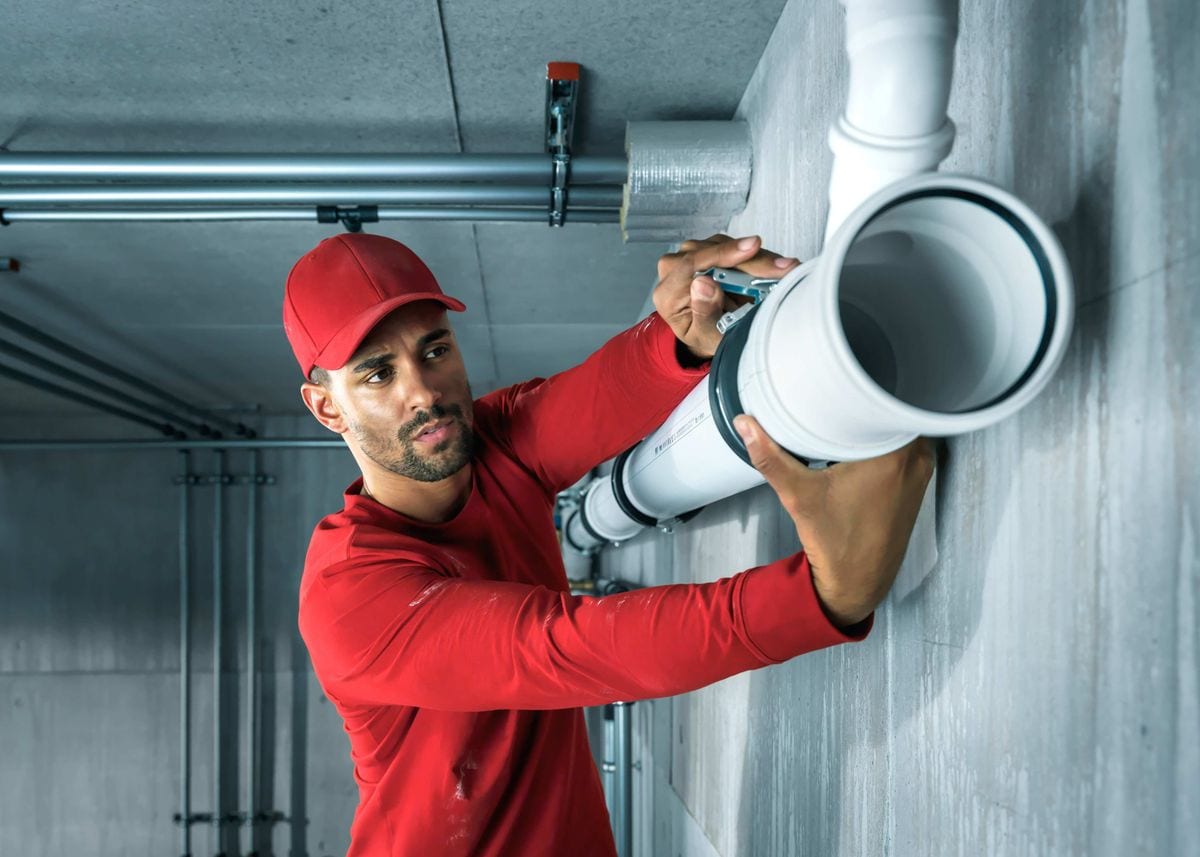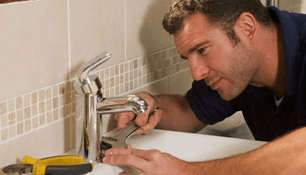The article below in relation to The Future of Plumbing: Trends and Innovations to Watch is without a doubt insightful. Give it a go and draw your own personal conclusions.

Intro
The plumbing industry is undertaking a transformative stage driven by technical developments and expanding issues for sustainability and performance. This article explores emerging fads and developments shaping the future of pipes.
Smart Plumbing Systems
Including wise innovation into plumbing systems allows remote monitoring, leakage detection, and automated upkeep. Smart sensors and IoT (Internet of Things) tools enable property owners and plumbing technicians to monitor water use and find issues in real-time, leading to a lot more reliable resource management and positive upkeep.
Water Performance Solutions
With boosting emphasis on water conservation, ingenious options are being established to decrease water wastefulness in pipes systems. High-efficiency fixtures, greywater recycling systems, and smart watering controllers are among the innovations helping customers minimize their water impact while preserving convenience and comfort.
Lasting Materials
The change towards sustainability includes plumbing materials, with a growing preference for environment-friendly options. Eco-friendly piping materials, such as PEX (cross-linked polyethylene) and HDPE (high-density polyethylene), offer resilience and resistance to rust without jeopardizing ecological integrity.
Predictive Maintenance
Predictive upkeep strategies leverage data analytics and machine learning formulas to prepare for and avoid plumbing concerns before they occur. By evaluating historic information and performance metrics, predictive maintenance algorithms can recognize patterns and anomalies, allowing proactive treatments to prevent costly repair work and disruptions.
Enhanced Reality in Plumbing
Enhanced Fact (AR) innovation is transforming pipes by offering specialists with real-time aesthetic guidance for troubleshooting and repair jobs. AR-enabled wise glasses or mobile applications overlay digital information onto the physical atmosphere, assisting plumbers imagine pipe formats, identify hidden leakages, and implement repair services with accuracy.
Impact of 3D Printing
The arrival of 3D printing has introduced brand-new possibilities in making plumbing elements. From custom-designed fixtures to detailed pipeline fittings, 3D printing allows for fast prototyping and on-demand manufacturing, decreasing preparations and making it possible for higher customization in pipes layout.
Health and Safety Qualities
In action to enhanced issues for health and wellness, pipes components are including attributes such as antimicrobial surfaces, touchless procedure, and self-cleaning devices. These advancements not only improve hygiene but also advertise customer comfort and ease.
Hygiene-focused Components
Touchless faucets, self-sanitizing toilets, and antimicrobial surfaces are becoming increasingly widespread in domestic and commercial settings, reducing the threat of bacterium transmission and promoting a cleaner, healthier atmosphere.
Water Top Quality Monitoring
Innovations in water top quality tracking technologies enable homeowners to keep track of the pureness and safety of their water system in real-time. Smart water high quality sensing units can spot impurities, pH degrees, and temperature variations, empowering customers to take proactive actions to make certain water security.
Remote Pipes Providers
Remote diagnostics and digital help are transforming the way pipes services are supplied. Through video conferencing and remote accessibility modern technologies, plumbing professionals can fix concerns, provide advice for DIY fixings, and even carry out remote evaluations, supplying better availability and convenience to property owners.
Difficulties and Opportunities
While pipes developments hold enormous pledge, they likewise present challenges such as information personal privacy problems, regulative compliance, and the demand for workforce training. Dealing with these challenges needs collaboration in between market stakeholders and regulatory bodies to ensure risk-free and liable application of brand-new innovations.
Regulatory Landscape
Regulatory frameworks play an important role in shaping the adoption of pipes developments, with requirements and codes governing everything from water efficiency to item security. As innovations remain to evolve, regulative bodies should adjust to ensure customer security and environmental stewardship.
Future Outlook
The future of plumbing is characterized by proceeded advancement and combination with other fields such as IoT, renewable energy, and structure automation. By embracing lasting techniques, leveraging arising modern technologies, and focusing on user-centric layout, the plumbing sector is positioned to attend to the developing demands of culture while lessening its ecological impact.
Conclusion
To conclude, the future of pipes is specified by a convergence of modern technology, sustainability, and user-centric design. By embracing smart options, lasting products, and positive maintenance practices, the pipes market can improve effectiveness, promote safety, and add to an extra sustainable future.
The Future of Plumbing: Trends and Innovations to Watch
Introduction to Future Plumbing Trends
The future of plumbing is being shaped by several key factors, including technological advancements, environmental concerns, and changing consumer expectations. These factors are driving the development of new products, services, and practices that enhance the efficiency, sustainability, and convenience of plumbing systems.
Key Trends and Innovations in Plumbing
- Smart Plumbing Systems: The integration of smart technology into plumbing systems is transforming the way we manage water usage and detect issues. Smart leak detectors, automated water shut-off valves, and smart faucets are just a few examples of how technology is enhancing plumbing systems. These devices provide real-time data and remote control capabilities, allowing homeowners to monitor and manage their water usage more effectively.
- Water Conservation and Efficiency: With increasing concerns about water scarcity, there is a growing emphasis on water conservation and efficiency. Innovations such as low-flow fixtures, greywater recycling systems, and rainwater harvesting are becoming more popular. Plumbers are adopting these technologies to help customers reduce their water consumption and save on utility bills.
- Sustainable Materials: The use of sustainable materials in plumbing systems is gaining traction. This includes the adoption of recyclable and biodegradable materials, as well as the use of non-toxic and eco-friendly products. Sustainable materials help reduce the environmental impact of plumbing systems and promote long-term sustainability.
- Energy-Efficient Water Heaters: Advances in water heating technology are leading to the development of more energy-efficient systems. Tankless water heaters, solar water heaters, and heat pump water heaters are becoming more prevalent. These systems offer significant energy savings and reduce the carbon footprint of homes and businesses.
- Trenchless Technology: Trenchless technology is revolutionizing the way plumbing repairs and installations are conducted. This method allows for the repair or replacement of pipes without extensive excavation, minimizing disruption and reducing costs. Techniques such as pipe bursting and cured-in-place pipe (CIPP) lining are gaining popularity.
- Health and Safety: The focus on health and safety is driving innovations in plumbing systems. Touchless faucets and fixtures, antimicrobial materials, and improved water filtration systems are being developed to enhance hygiene and protect public health. Plumbers are adopting these innovations to meet the growing demand for safer and healthier plumbing solutions.
- Remote Diagnostics and Monitoring: The ability to diagnose and monitor plumbing systems remotely is becoming increasingly important. Remote diagnostic tools and sensors allow plumbers to identify issues and perform maintenance without the need for on-site visits. This enhances efficiency and reduces the need for costly emergency repairs.
Impact of Future Trends on the Plumbing Industry
- Enhanced Efficiency: The adoption of smart technology and energy-efficient systems will enhance the efficiency of plumbing systems. This will lead to reduced water and energy consumption, lower utility bills, and improved performance.
- Sustainability: The focus on sustainability will drive the development and adoption of eco-friendly plumbing solutions. This will contribute to the conservation of natural resources, reduction of waste, and protection of the environment.
- Improved Customer Experience: The integration of technology and innovative solutions will improve the customer experience. Homeowners will have greater control over their plumbing systems, access to real-time data, and the ability to manage their water usage more effectively.
- Increased Demand for Skilled Plumbers: The adoption of new technologies and materials will require plumbers to acquire new skills and expertise. There will be an increased demand for skilled plumbers who are knowledgeable about the latest trends and innovations.
- Cost Savings: The use of efficient and sustainable plumbing solutions will result in cost savings for both homeowners and businesses. Reduced water and energy consumption, lower maintenance costs, and fewer emergency repairs will contribute to overall affordability.
Preparing for the Future of Plumbing
- Stay Informed: Keep up-to-date with the latest trends and innovations in the plumbing industry. Attend industry conferences, participate in training programs, and engage with manufacturers to stay informed.
- Invest in Training: Ensure that you and your team are trained in the latest technologies and installation techniques. This will enable you to offer cutting-edge solutions to your customers and stay competitive in the market.
- Promote Sustainable Solutions: Highlight the benefits of eco-friendly and energy-efficient plumbing solutions to your customers. Educate them about the advantages of adopting sustainable practices and products.
- Leverage Technology: Embrace smart technology and remote diagnostic tools to enhance your services. Offer remote monitoring and maintenance options to provide added convenience and value to your customers.
- Collaborate with Manufacturers: Partner with manufacturers of innovative plumbing products to gain access to the latest solutions and technical support. This can also provide opportunities for joint marketing efforts.
- Focus on Customer Education: Educate your customers about the benefits and functionality of new plumbing technologies. Provide guidance on how to use smart systems and maintain sustainable plumbing solutions.
Conclusion
The future of plumbing is being shaped by exciting trends and innovations that promise to enhance efficiency, sustainability, and convenience. By staying informed and embracing these changes, plumbers can provide superior services to their customers and contribute to a more sustainable future. The adoption of smart technology, sustainable materials, and energy-efficient systems will drive the evolution of the plumbing industry, creating new opportunities and challenges. By preparing for the future, plumbers can ensure their success in a rapidly changing market.

I was made aware of that write-up on Innovative Plumbing Trends Transforming Construction from an associate on our other website. Appreciated our piece of writing? Please quickly share it. Let another person find it. Thanks for your time. Revisit us soon.
Call
Comments on “Forecasting the Upcoming Phase of Plumbing: Developments and Innovations”